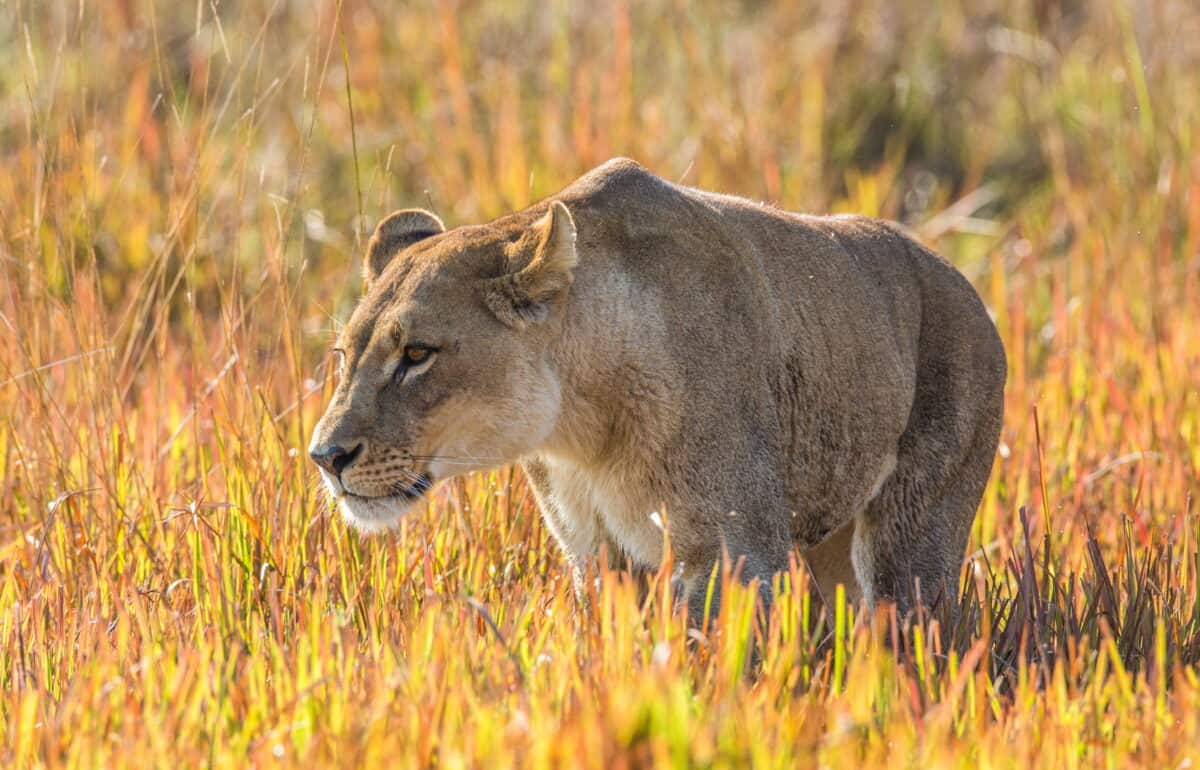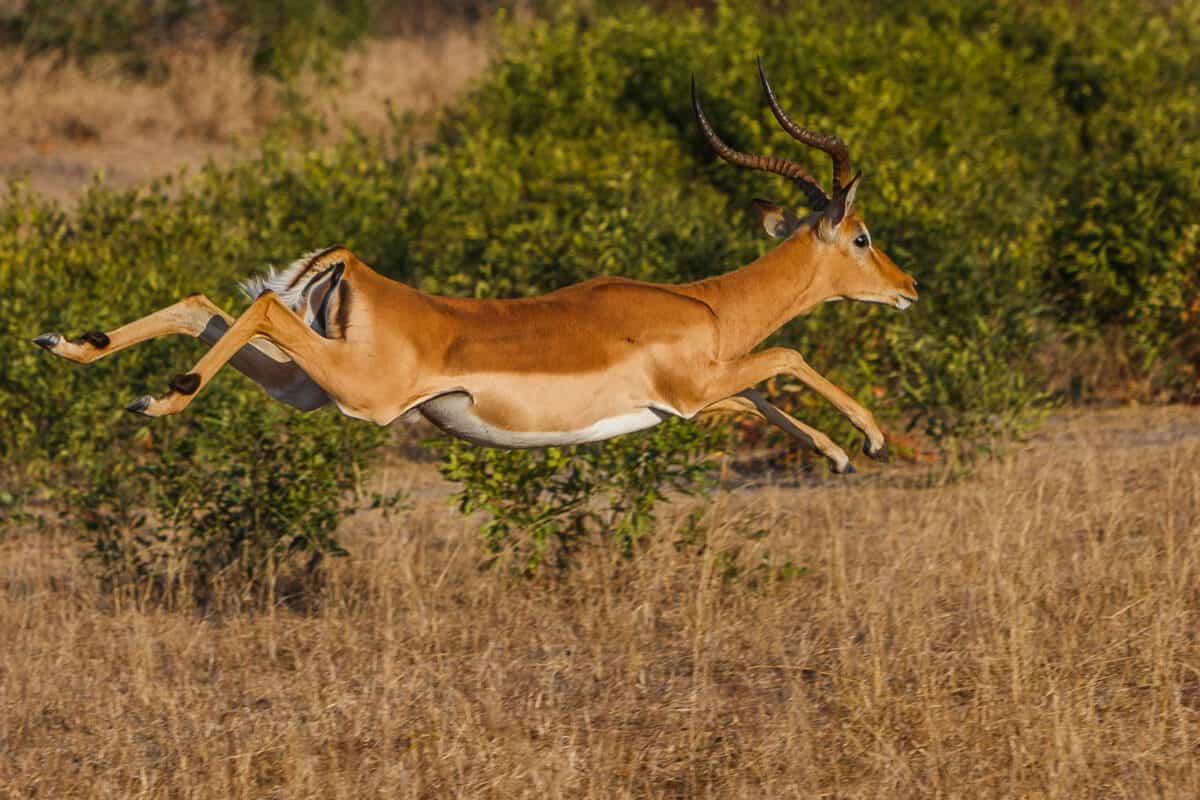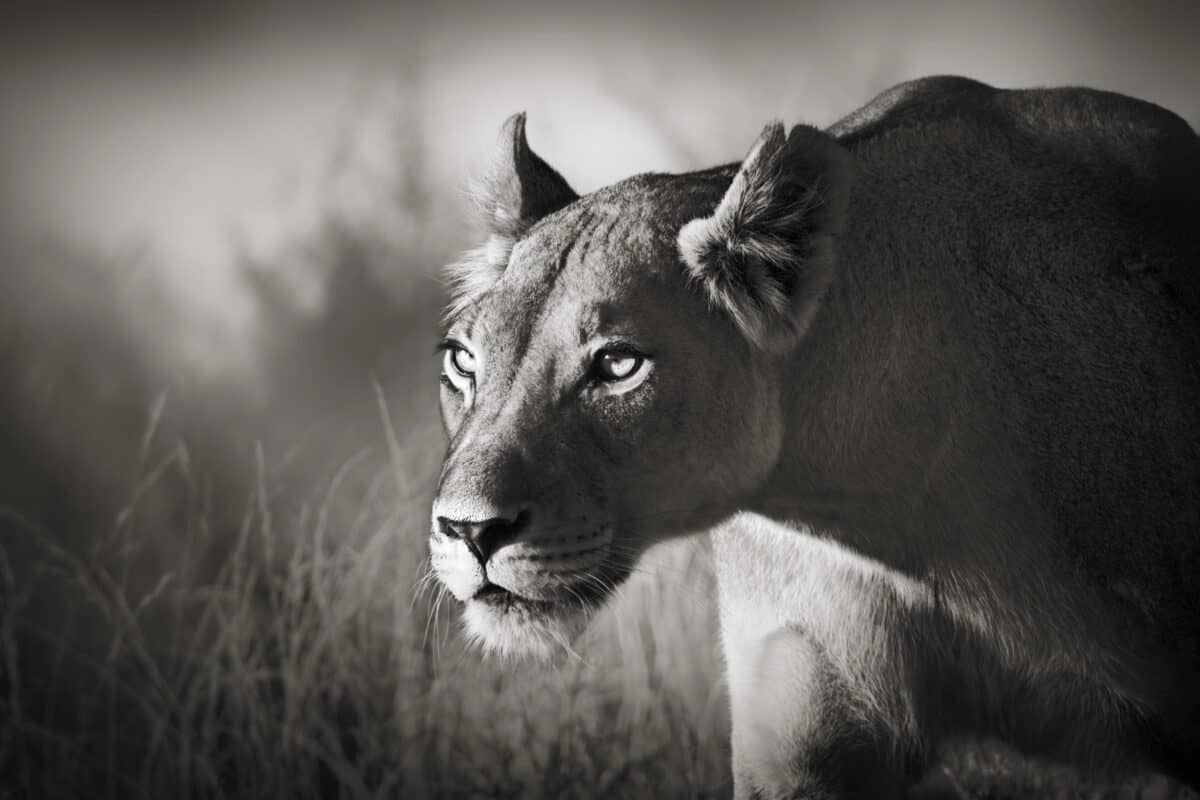Simeone Lategan captured a remarkable moment in Matusadona National Park, Lake Kariba, between a pride of lions and a herd of Impala. Simeone and her family were celebrating her father’s 70th birthday with a week-long stay on a houseboat, when they saw a large pride of lions hunting a herd of impala.
The Hunt
The lions surrounded the impala herd, creating chaos among the impalas. Impalas speeded past the lions, and some even tried jumping over them. During this desperate attempt to escape, one unlucky impala was caught.
Lions (Panthera leo)

- Prides: Lions are highly social and live in groups of about 15. These groups are called prides.
- Habitat: Lions are mostly found in Africa. However, a small group of Asiatic lions (Panthera leo persica) inhabit Gir Forest National Park in western India.
- Hunting: Female lions are often the hunters in the family. They usually work together to stalk and catch their prey.
- Diet: As carnivores, lions prey on various animals including, zebras, wildebeests and buffaloes.
- Communication: Their roar can be heard up to 8 km away.
- Conservation Status: According to the International Union for Conservation of Nature (IUCN), lions are vulnerable. Populations are declining due to human-wildlife conflict and habitat loss.
- Interesting fact: Lions have adapted to dry regions such as the Kalahari Desert. They are able to get most of their water from the body fluids of their prey. They even get water from some plants like the Tsamma melon.
Impala (Aepyceros melampus)

- Herds: Impala are often found in groups called herds. Two groups usually form; bachelor herds and female herds with their young. A dominant male often leads the female herds.
- Habitat: Impala are found in eastern and southern Africa.
- Feeding: They are herbivorous, grazing on grasses and browsing on leaves.
- Communication: Impalas often use various sounds to alert the rest of the herd of nearby danger.
- Conservation status: Least concern according to IUCN
- Interesting fact: Impala are able to jump distances of up to 10 meters and heights of about 3 meters.
The Video
In the video, lions surround the herd of impala. The video shows their impressive hunting skills. The pride uses the body of water to their advantage. They push a few individuals of impala so that they are blocked off by water on the one side and the pride on the other. The video also showcases the impressive ability of impalas. The impalas are capable of jumping to impressive heights.
Conclusion
The family reflect on the privilege of witnessing this event in nature. I hope this story inspires you to visit wild places in Africa. Ecotoursim helps support conservation efforts that will ensure that scenes like this continue to inspire people long into the future.
You might also enjoy:
- Gorilla vs Lion
- Watch: A lion trips and falls over a waterfall
- Watch: Lioness Attack on Zebra Gone Wrong
Join our Forum for free today!

- The Bond Between a Wild Baby Bison and Her Rescuer - July 20, 2024
- An Excited Husky’s First Ever Time in Snow - July 20, 2024
- Top 20 Colorful Species To Brighten Your Day - July 14, 2024

